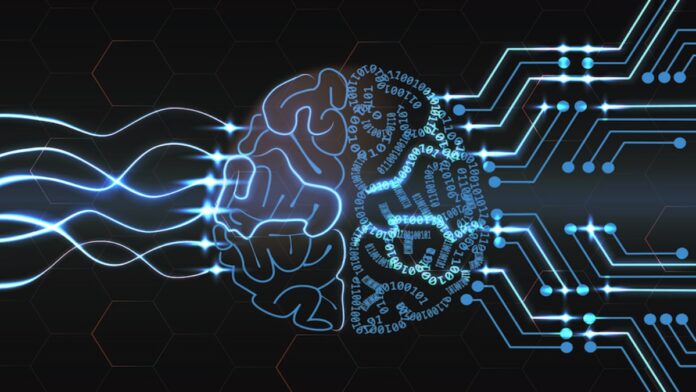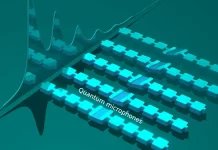Elon Musk and others co-founded Neuralink Corporation, a neurotechnology business that develops implantable brain-machine interfaces (BMIs). The company’s headquarters are in San Francisco’s Pioneer Building, which shares offices with OpenAI. Neuralink was first publicly reported in March 2017 after it was launched in 2016. In this article, learn about developing implantable brain-machine interfaces known as Neuralink.
Contents
What is Neuralink?
Neurosurgeons will use robotics to implant Neuralink into the brain. A link chipset is implanted in the skull during this procedure. It is made up of several insulated wires that are connected to the electrodes used in the process. This device is used to control cell phones and computers without touching them.
History of Neuralink
Elon Musk, Max Hodak, Ben Rapoport, Dongjin Seo, Paul Merolla, Philip Sabes, Tim Gardner, Tim Hanson, and Vanessa Tolosa founded Neuralink in 2016. Experts in neuroscience, biology, and robotics make up the group. In January 2017, the trademark “Neuralink” was purchased from its former owners. In April 2017, Neuralink revealed that its short-term goal was to develop devices to treat significant brain illnesses, with the long-term goal of human improvement, sometimes known as transhumanism. Musk stated his interest in the concept arose partly from the science fiction concept of “neural lace” in the imaginary setting of Iain M. Banks’ The Culture series of ten novels.
Musk described the neural lace as a “digital layer above the cortex” that would ideally be implanted by a vein or artery rather than through lengthy surgery. He stated that the long-term goal is to develop “symbiosis with artificial intelligence,” which he considers an existential threat to humans if left unchecked.
Neuralink will be based in San Francisco’s Mission District by 2020, sharing the Pioneer building with OpenAI, another Musk-founded firm. In 2018, Neuralink listed Jared Birchall, the head of Musk’s family office, as CEO, CFO, and president. Musk was the primary owner of Neuralink as of September 2018, but he was not on the board of directors.
According to an article in Stat News, only three of the eight founding scientists remained at Neuralink by August 2020 after “years of internal struggle in which pushed schedules clashed with the slow and incremental pace of science.” However, in April 2021, Neuralink showed a monkey utilizing the Neuralink implant to play the game “Pong.” Scientists welcomed the engineering advancement in making the implant wireless and increasing the number of implanted electrodes, even though similar technology had existed since 2002 when a study group first exhibited a monkey moving a computer cursor with neural signals.
Technology Behind Neuralink
According to Gizmodo, Neuralink “remains highly covert about its work,” despite public records showing that this attempted to build an animal testing facility in San Francisco; it then began conducting research at the University of California, Davis. The Neuralink team disclosed the technology of the prototype they were working on in 2019 at a live presentation at the California Academy of Sciences. It’s a device that includes ultra-thin devices put into the brain, a neurosurgical robot that performs the procedures, and a high-density electronic system that can process information from neurons. It is based on technologies created at the University of California, San Francisco (UCSF) and the University of California, Berkeley (UC Berkeley).
Robot
Neuralink claims to have built a robot capable of rapidly inserting many flexible devices into the brain, perhaps avoiding the tissue damage and longevity issues that larger, more rigid probes can cause. This robot contains an insertion head with a 40-meter-diameter tungsten-rhenium needle that is meant to attach to the insertion loops, transfer and insert individual devices, and access the nerve roots and brain tissue. The robot can insert up to six wires (192 electrodes) each minute.
Probes
The probes, typically made of polyimide, a biocompatible polymer with a thin gold or platinum conductor, are implanted into the brain by a surgical robot in an automated process. Each probe has a wired section with electrodes capable of finding electrical impulses in the brain and a sensory area where the wire interacts with an electronic system that allows the brain signal to be amplified and acquired. Each probe has a wired section with electrodes capable of finding electrical impulses in the brain and a sensory area where the wire interacts with an electronic system that allows the brain signal to be amplified and acquired.
Electronics
A 1,536-channel recording system has been created by Neuralink using an Application-Specific Integrated Circuit (ASIC). This system consists of 256 independently programmable amplifiers (“analog pixels”), on-chip analog-to-digital converters (“ADCs”), and remote circuit control to serialize the digitized data acquired. Its goal is to convert information from neurons into a binary code that can be understood to understand better brain function and the capacity to activate these neurons. Unfortunately, electrodes are too large to record the firing of individual neurons with current technology, so they can only record the firing of a group of neurons; Neuralink representatives believe this issue can be solved algorithmically, but it is computationally expensive and does not produce exact results.
Criticism of Neuralink
An unnamed former employee attacked Neuralink’s corporate culture in a January 2022 piece in Fortune. They identified a “blame and fear culture” with shifting priorities. Moreover, Musk is accused of undermining management by pushing younger staff to “send issues and complaints straight to him.”
Neuralink tests its devices by surgically implanting them in the brains of live monkeys, pigs, and other animals. PETA and other animal rights organizations have slammed Neuralink’s tactics. Neuralink’s monkey tests were carried out in collaboration with UC Davis from 2017 to 2020. UC Davis transferred seven monkeys to Neuralink at the end of their cooperation. The Physicians Committee for Responsible Medicine (PCRM) accused Neuralink and UC Davis of mistreating many monkeys, causing severe discomfort, terrible suffering, and chronic illnesses due to procedures in 2022. Experiments by Neuralink and UC Davis involved at least 23 monkeys, and the PCRM believes that 15 of them died or were killed as a result of the experiments. The PCRM also claimed that UC Davis concealed photographic and video proof of the mistreatment. Neuralink stated in February 2022 that monkeys died during testing but that no animal mistreatment happened.
Several neurology experts have discussed Musk and Neuralink’s plans to develop a brain-computer interface. The scientific community has had a mixed reaction. Musk described one of their early gadgets as “a Fitbit in your skull” during a live demonstration in August 2020, claiming that it might soon treat paralysis, deafness, blindness, and other afflictions. Many neuroscientists and journals slammed these statements. They were labeled as “extremely speculative” and “neuroscience drama” by MIT Technology. Professor Andrew Jackson of Newcastle University noted that while he didn’t “believe there was anything groundbreaking in Neuralink’s pig implant presentation,” the wireless aspects were “great.” According to Thiago Arzua of the Medical College of Wisconsin, Neuralink has “shown little more than a fancy new design for a BMI with more electrodes.”
Conclusion
To conclude, we discussed the Neuralink Brain-Machine Interface in this post. First, we discussed how a brain-chip gadget like Neuralink could help with brain and spine issues. Then we spoke of the present technology and its limitations. We also discussed how Neuralink could be a better alternative to current technologies like the BrainGate Neural Interface System and Deep Brain Stimulation. Finally, we covered how the Neuralink is effortlessly placed and how it influences neurons by transmitting electric current through thousands of electrodes, affecting millions of neurons in the brain.
Sources
- Statt, Nick (March 27, 2017). “Elon Musk launches Neuralink, a venture to merge the human brain with A.I.” The Verge. Archived from the original.
- Masunaga, Samantha (April 21, 2017). “A quick guide to Elon Musk’s new brain-implant company, Neuralink.” Los Angeles Times. Archived from the original.
- “Elon Musk’s Brain Tech Startup Is Raising More Cash.” May 11, 2019. Archived from the original.
- Markoff, John (July 16, 2019). “Elon Musk’s Company Takes Baby Steps to Wiring Brains to the Internet.” The New York Times. ISSN 0362-4331. Archived from the original.
- Elon Musk unveils Neuralink’s plans for brain-reading ‘threads’ and a robot to insert them. Archived July 17, 2019, at the Wayback Machine Elizabeth Lopatto, The Verge.
- “Inside Neuralink, Elon Musk’s mysterious brain chip startup: A culture of blame, impossible deadlines, and a missing CEO.” Fortune.
- Cellan-Jones, Rory (September 1, 2020). “Is Elon Musk over-hyping his brain-hacking Neuralink tech?”. BBC News. Archived from the original on September 12, 2020.
- Meet the Guys Who Sold “Neuralink” to Elon Musk without Even Realizing It, April 4, 2017, MIT Technology Review.
- Newitz, Annalee (March 27, 2017). “Elon Musk is setting up a company that will link brains and computers.” Ars Technica. Archived from the original.
- Elon Musk thinks we will have to use A.I. this way to avoid a catastrophic future Archived February 13, 2019, at the Wayback Machine. Robert Ferris, CNBC News.
- Elon Musk believes A.I. could turn humans into an endangered species like the mountain gorilla. Archived December 4, 2018, at the Wayback Machine. Isobel Asher Hamilton, Business Insider.
- “Clubhouse Elon Musk interview transcript.” Jameson Ivan — from product to entrepreneur. February 7, 2021.
- Conger, Kate. “Elon Musk’s Neuralink Sought to Open an Animal Testing Facility in San Francisco.” Gizmodo. Archived from the original.
- No-Action Letter: Neuralink Corp Archived July 20, 2019, at the Wayback Machine. U.S. Securities and Exchange Commission (SEC).
- “Ahead of Neuralink event, ex-employees detail research timeline clashes.” STAT. August 25, 2020.
- Jack Guy. “Elon Musk’s Neuralink claims monkeys can play Pong using just their minds.” CNN.
- “Neuralink’s Monkey Experiment Raises Questions From Scientists and Tech Ethicists.” Observer. April 13, 2021.
- Kolodny, Lora (May 2, 2021). “Neuralink co-founder Max Hodak leaves Elon Musk’s brain implant company.” CNBC.
- U.S. application 20180296243, Timothy L. Hanson, Michel M. Maharbiz, Philip N. Sabes, “Methods, Compositions, and Systems for Device Implantation.”
- Musk, Elon; Neuralink (July 18, 2019). “An integrated brain-machine interface platform with thousands of channels.” bioRxiv: 703801. doi:10.1101/703801. PMID 31642810. S2CID 201192799.
- “Neuralink Paper Review – Numenta Research Meeting.” Numenta, Inc. was Archived from the original on July 24, 2019. Retrieved July 27, 2019 – via YouTube.
- Metz, Rachel (August 28, 2020). “Elon Musk shows off a working brain implant — in pigs.” CNN.
- Shead, Sam (February 1, 2021). “Elon Musk says his startup Neuralink has wired up a monkey to play video games using its mind.” CNBC.
- Linder, Courtney (September 9, 2020). “Why Is Elon Musk Testing His Brain Implant on Pigs?”. Popular Mechanics.
- Vanian, Jonathan (February 9, 2022). “Elon Musk’s brain-implant startup has a new legal headache—allegations that it abuses its monkeys.” Fortune.
- Ryan, Hannah (February 17, 2022). “Elon Musk’s Neuralink confirms monkeys died in the project, denies animal cruelty claims.” CNN. p. 1.
- “Full Page Reload.” IEEE Spectrum: Technology, Engineering, and Science News.
- “Is Elon Musk over-hyping his brain-hacking Neuralink tech?”. BBC News. September 1, 2020.
- Arzua, Thiago (August 29, 2020). “Despite a flashy design, Elon Musk’s Neuralink has little substance.” Massive Science.
FACT CHECK: We strive for accuracy and fairness. But if you see something that doesn’t look right, please Contact us.
DISCLOSURE: This Article may contain affiliate links and Sponsored ads, to know more please read our Privacy Policy.
Stay Updated: Follow our WhatsApp Channel and Telegram Channel.














